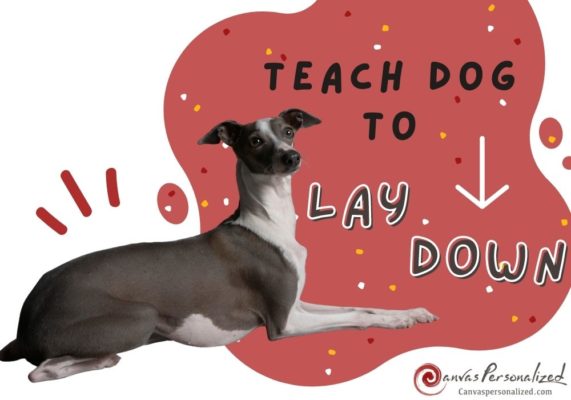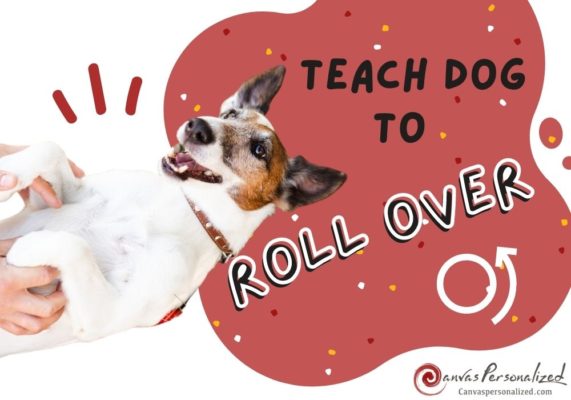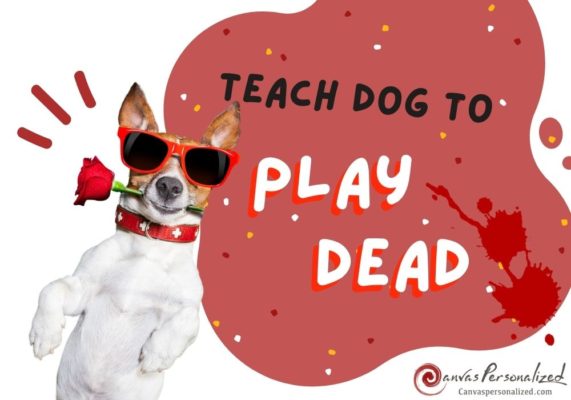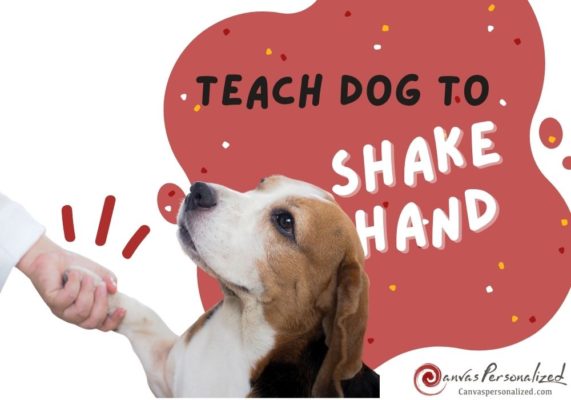Living with a dog who snaps, growls, or lunges can be stressful and scary. But before you give up hope, take a breath! Aggressive dog training is possible, and with the right approach, you can build a happier, more secure relationship with your furry friend. This article from Canvas Personalized will guide you through the different types of aggression, explore effective training techniques, and provide tips for keeping everyone safe.
1. Understanding Dog Aggression
1.1. Why does a dog become aggressive?
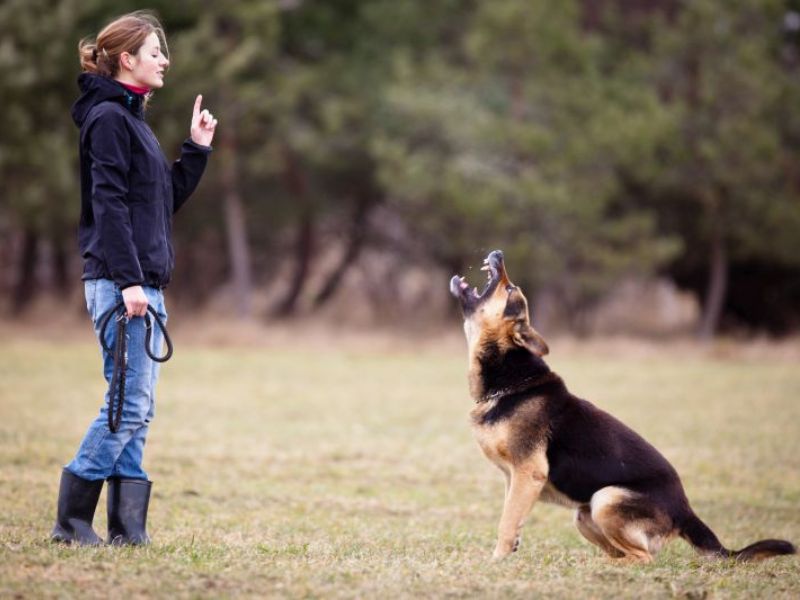
Understanding the root cause of your dog’s aggression is the first step towards positive change. Here are some common reasons dogs develop aggressive tendencies:
- Insufficient interaction with others
- Lack of fundamental obedience training
- Unpleasant experiences
1.2. Types of aggression in dogs
Dogs may exhibit aggressive behavior for various reasons. According to the American Society for the Prevention of Cruelty to Animals (ASPCA), dogs can exhibit different types of aggression:
| Aggression Types | Symptoms | Cause |
| Fear Aggression | Run away from a person or animal that scares them, but they might sneak up and nip at them from behind if the threat walks away. | Lack of socialization |
| Possessive Aggression (Resource Guarding) | React aggressively when other people or pets approach their food, toys, or other valued items. | Instinctual behavior to protect their resources. |
| Pain-Elicited Aggression | Dogs in pain may become irritable and more likely to snap or even bite if touched in a sensitive spot. | Injury, illness, arthritis, or improper use of certain pieces of training equipment |
| Territorial Aggression | Barking, growling, lunging at people or animals approaching their territory (home, yard) | Long stays in one place, instincts, lack of mental stimulation |
| Predatory Aggression | Chasing and grabbing fast-moving things; fixate on small animals, become very still, and may drool while fixating. | The urge to hunt, lack of mental stimulation |
| Frustration-Elicited Aggression | If a dog is unable to communicate their needs or desires, they might resort to aggression out of frustration. | Boredom, lack of exercise, or confusion about what’s expected of them. |
| Protective Aggression | The mother dog might behave aggressively towards anyone or anything approaching her puppies. | Instincts |
*Important note: Dominance aggression, where a dog displays aggression to assert control over humans, is a less common explanation for aggressive behavior than previously thought. In the past, many dog training philosophies emphasized “pack leadership” and dominance hierarchies. This led to the belief that dogs displayed aggression as a way to assert control over their human “pack members.” However, recent research and observations of canine behavior have challenged this view.
By recognizing the underlying cause of aggression, you can tailor an aggressive dog training plan that addresses the root of the problem and helps your dog feel more secure and comfortable.
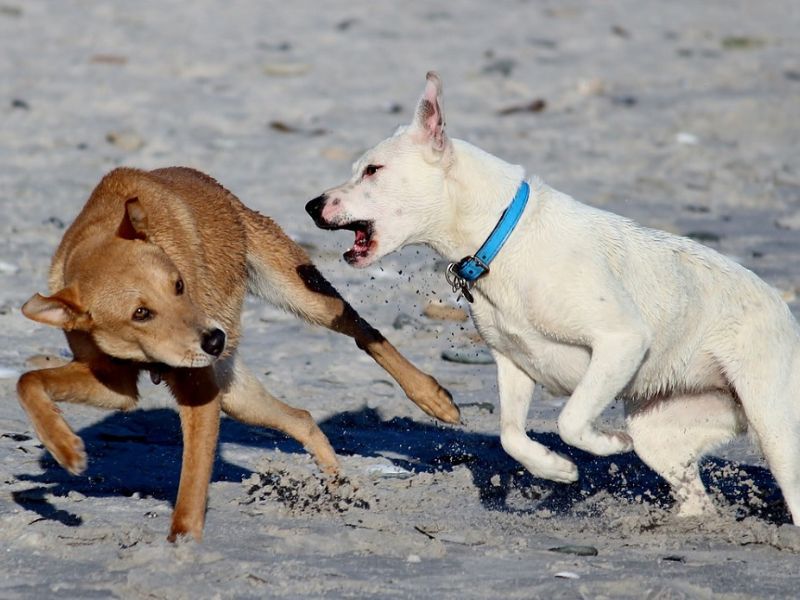
1.3. Warning signs of aggressive behavior in dogs
It’s important to be aware of the subtle and not-so-subtle signs your dog might be displaying before they lash out. Early recognition can help you avoid a potentially dangerous situation and intervene before things escalate. Here are some key warning signs to watch for:
Body language:
- Stiff posture: A rigid body, raised hackles, or a lowered head can signal tension and potential aggression.
- Direct stare: Unbroken eye contact, especially with a furrowed brow, can be a threat display.
- Tail position: A high, stiff tail or a tucked tail between the legs can both indicate fear or aggression. Watch for tense wagging, which is different from a relaxed, happy wag.
- Ears: Flattened ears or ears pinned back can signal fear or threat.
- Snarling or growling: These are clear warnings that your dog feels threatened and may bite.
- Lip curling: Exposing their teeth is a serious warning sign.
Behavioral changes:
- Growling or snapping at people or other animals they normally tolerate.
- Excessive barking or lunging.
- Trying to bite at objects or people when touched in a certain area.
- Hiding or cowering.
- Sudden changes in appetite or energy levels.

As you can see from the canine ladder of aggression, aggressive behavior often escalates in stages, with warning signs appearing long before a serious incident. If your dog has become truly violent, it’s likely you missed or ignored earlier signals. This could be especially true with a rescue dog who may have already developed aggressive tendencies.
As a pet owner, it’s crucial to catch these signs early and take action. Remember, addressing a growl is much easier (and safer) than dealing with a bite. So, pay close attention and take steps to intervene quickly!
2. How to Train An Aggressive Dog
2.1. See the veterinarian first
Even if the aggression of your furry friend seems minor, a trip to the vet could be the key to aggressive dog training. A simple checkup might reveal a hidden injury or illness that’s causing your dog pain or discomfort. Discomfort, whether internal or external, can often trigger aggression. The good news? Once the underlying medical condition is treated and your dog feels better, the aggressive behavior might disappear altogether!
*Pro tip: Before your appointment, explain any concerns you have with your dog’s aggression. Mentioning recent nipping or growling behavior gives your veterinarian a clear picture of what to watch for during the exam. This advanced notice helps them tailor the appointment to assess your dog’s health and behavior effectively.
2.2. Focus on the Root Cause
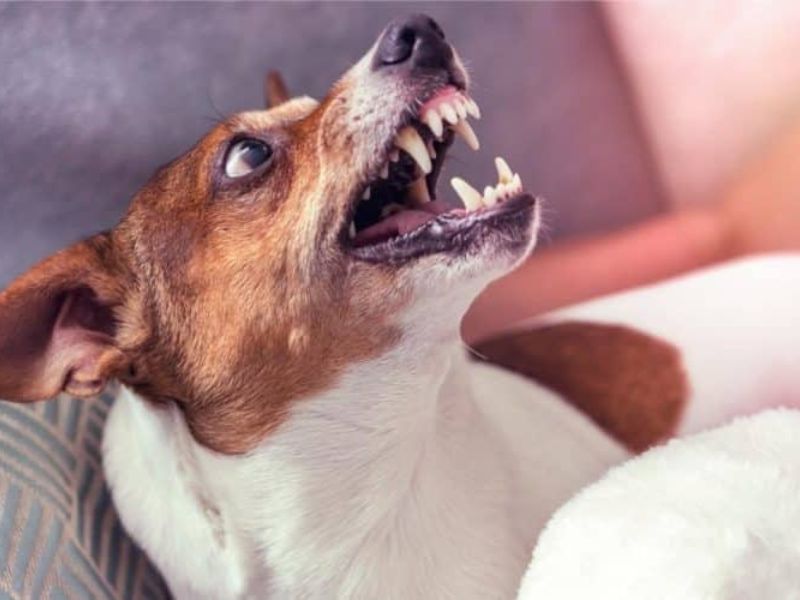
If a vet visit gives your dog a clean bill of health issues, it’s time for ‘detective’ work! You might want to review the different types of aggression (fear-based, possessive, etc.) and consider potential triggers in your dog’s life. Does your dog growl when strangers approach? Does he or she snap at other dogs on walks?
2.3. Consult with a canine behavioral consultant
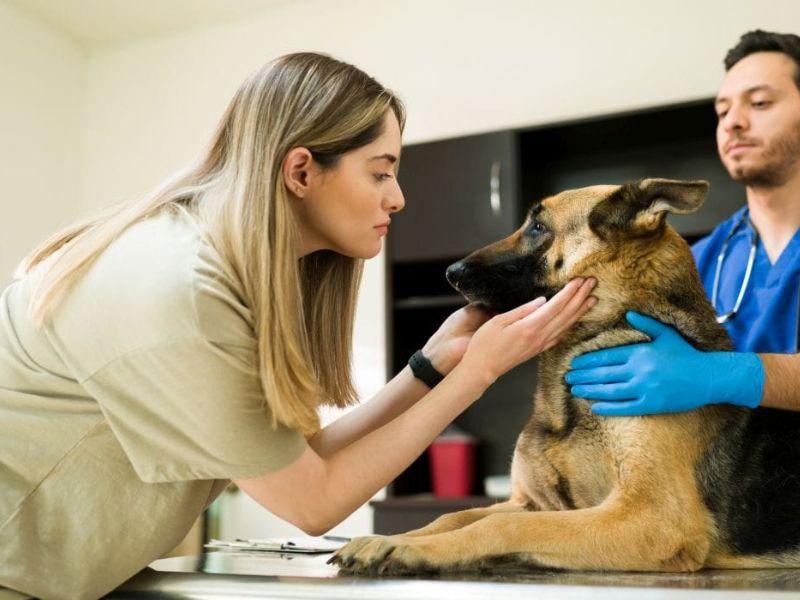
If you cannot figure out the triggers yourself, I highly recommend consulting a certified dog trainer or animal behaviorist. They not only help you determine why your dog is being aggressive but also create a personalized dog aggression training plan you can implement at home.
While some dog behavior issues might seem manageable on your own, aggression is different. It can quickly escalate and pose a threat to you, your loved ones, and other animals. Even if you’re a skilled dog trainer, dealing with aggression requires professional help. While certified behavior consultants do charge fees, the investment in their expertise pales in comparison to the potential consequences of dealing with sharp teeth and claws.
2.4. Give your dog enough exercise and stimulation

Your vet and animal behaviorist might highlight lacking exercise as a potential contributor to your dog’s aggression. If you see any signs of aggressive behaviors, increasing your dog’s exercise level is a great first step to take.
Remember that certain dogs have a higher energy level and require more activity than others.
| Dog Breed | Exercise time per day | |
| High exercise needs | – Terrier group (e.g., Jack Russell, Lakeland) – Herding group (e.g., Sheepdogs, Shepherds) – Working group (e.g., Siberian Huskies, Rottweilers) – Sporting group (e.g., Retrievers, Setters) – Scenthound group (e.g., Bloodhounds, Beagles) | 60 to 120 minutes |
| Low to medium exercise needs | – Brachycephalic group (e.g., Boxers, American Bulldogs) – Toy group (e.g., Chihuahuas, Pomeranians) – Sighthound group (e.g., Afghan Hounds, Greyhounds) – Giant dog breeds (e.g., Great Danes, Saint Bernards). | 30 to 60 minutes |
Since mixed breeds can be a combination of various dog types, researching their potential ancestry might give clues about their ideal activity level. Remember, exercise needs typically decrease as dogs enter their senior years. If you’re unsure about the best exercise plan for your furry friend, don’t hesitate to consult your veterinarian or animal behaviorist.
Already giving your dog exercise? Great! If you’re seeing aggression and suspect a lack of exercise might be a factor, even small changes can make a big difference. Consider adding an extra walk each day or extending your existing walks by a few minutes. These minor adjustments can significantly increase your dog’s daily activity level and potentially help address aggression.
*Side note: Sometimes, our lifestyle or living situation might not allow us to provide the exercise level a particular dog requires. If, despite your best efforts, providing the level of exercise your dog truly needs seems impossible, then rehoming – while incredibly difficult – could be the most responsible decision for your dog’s long-term well-being.
2.5. Use desensitization and counterconditioning methods
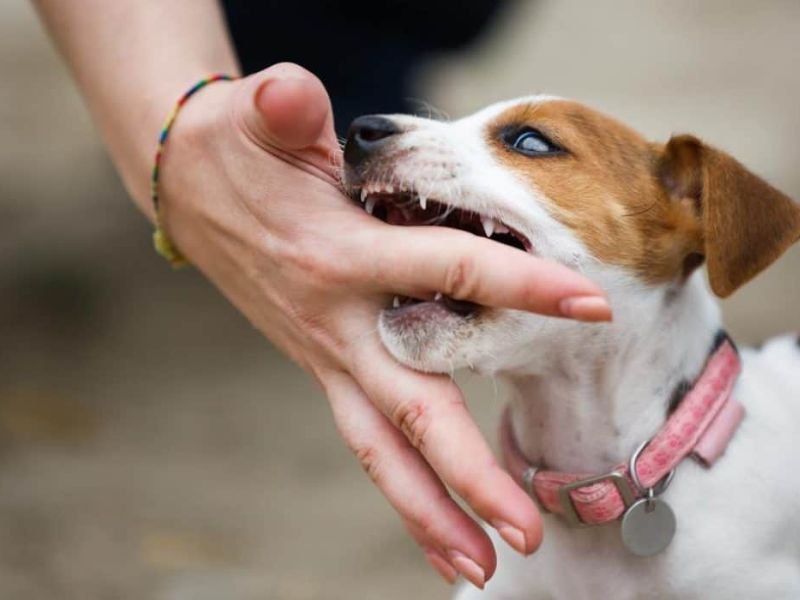
Counterconditioning and desensitization are powerful dog aggression training techniques that help your furry friend overcome fear-based aggression.
“Desensitization” is a technique that slowly helps your dog get used to something scary. This involves gradually exposing your dog to these stimuli at very low levels. Then, you slowly and steadily increase those levels.
Take barking at other dogs, for instance. Instead of throwing your dog into a stressful situation with a strange dog right away, we’d start much further apart. Maybe 50 feet is a comfortable distance where your dog doesn’t react. Over time, with positive reinforcement like treats and praise for calmness, we can slowly decrease that distance (45 feet, 40 feet, and so on). This gradual approach helps your dog learn to tolerate other dogs at closer distances, eventually leading to successful socialization.

“Counterconditioning” is closely linked to desensitization. That’s when you transform your pet’s negative reaction to a stimulus into a positive one. Let’s take the dog socialization example again. As you slowly get closer to other dogs (during desensitization), counterconditioning comes in. Right before your dog starts showing any signs of nervousness, you introduce something positive, like a yummy treat, a fun game, or a favorite toy.
This positive association helps your dog learn to connect the previously scary trigger (other dogs) with something enjoyable. Over time, these positive experiences replace the negative ones, leading to a happier and more comfortable pup around other dogs.
In this process of aggressive dog training, keeping your furry friend “below threshold” is critical. This means introducing treats, praise, or anything that makes your dog happy before they get stressed or scared enough to lash out. Think of it like a tipping point – you want to introduce the good stuff before they “tip over” into bad behavior.
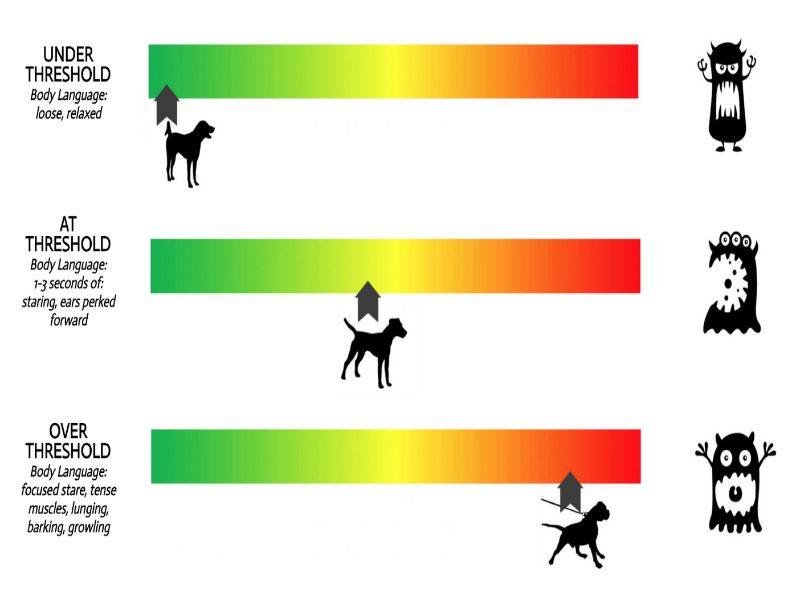
While desensitization and counterconditioning sound simple, they require a tailored approach for each dog. This includes the speed of introducing triggers (desensitization) and the kind of rewards that motivate your pup (counterconditioning). That’s why consulting a certified dog trainer or animal behaviorist is essential.
2.6. Be patient
Remember, progress takes time and patience. Even with excellent training, addressing aggression can take months. It’s important to be realistic about your goals. Some dogs, particularly those with a history of abuse or neglect, may have more profound challenges. Their anxiety or socialization issues might not completely disappear. However, with professional help and consistent training, you can still create a happier relationship with your dog.
>>> Learn how to calm down your dog with our top tips and techniques!
3. Tips for Aggressive Dog Training
Think of management as keeping everyone safe while you work on dog aggression training. These techniques don’t directly change your dog’s behavior as counterconditioning and desensitization, but they’re crucial to prevent further aggression and create a safe environment for everyone involved.

3.1. Leash control and secure harnesses
Always use a secure leash and harness when walking or going out with your dog. This gives you greater control and prevents them from approaching triggers or lunging. Opt for a well-fitting harness to avoid choking or discomfort that could worsen aggression.
3.2. Gating and barriers
Baby gates or room dividers can be helpful for separating your dog from triggers in your home. This can be used to create safe spaces for your dog or keep them apart from guests or other pets when necessary.
3.3. Consider using a muzzle
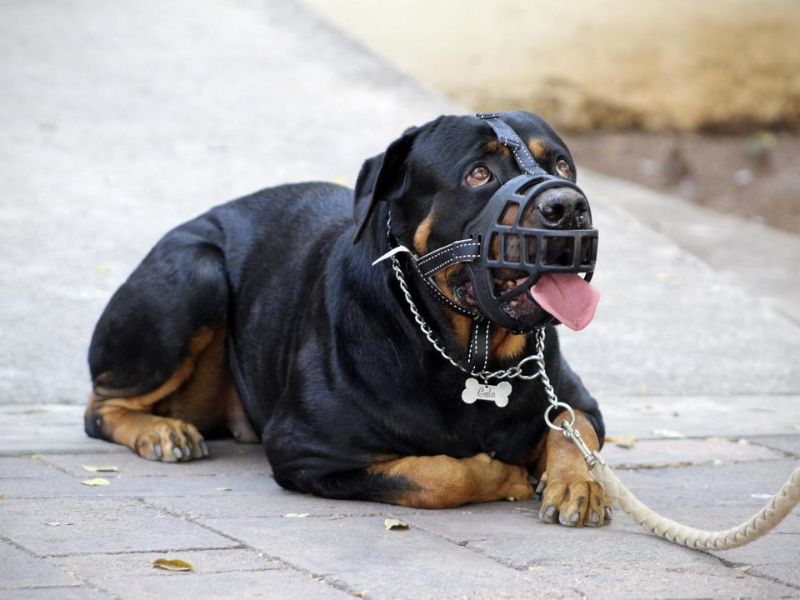
A properly fitted muzzle can be a valuable tool for preventing bites while training, especially for severely aggressive dogs. Muzzles should not be used as a punishment but rather as a temporary safety measure during training sessions or outings.
3.4. Find empty dog parks
Leash-free fun for an aggressive pup? It’s possible, but with planning! Since other dogs or people might trigger aggression, plan leash-free time strategically. Consider visiting dog parks during quieter hours, like early mornings or evenings.
3.5. Use “do not pet” clothing
It’s pretty common for strangers, especially little ones, to be drawn to your pup for a cuddle. Consider using a vest or harness with clear “Do Not Pet” messages. This friendly reminder helps keep everyone safe by politely discouraging unwanted petting, especially from well-meaning adults and curious kids who might not understand canine body language.
3.6. Positive reinforcement training

Positive reinforcement is the key to helping your aggressive dog. Punishment techniques like shock collars, leash corrections, yelling, or scolding won’t address the underlying fears and anxieties that cause aggression. Instead, positive reinforcement training builds trust and rewards good behavior, creating a more positive and effective path toward overcoming aggression.
With positive reinforcement training, consistency is essential. Your dog will be more likely to repeat the excellent action if it learns to associate it with a favorable outcome.
>>>Check out more helpful dog training tips for maintaining your dog’s health and good physical!
3.7. Consult your vet about prescription medications
Just like for humans, vets can sometimes prescribe medications like Prozac or Xanax for dogs with anxiety-related aggression. These medications can be pretty helpful in managing these behaviors.
However, it’s important to remember that medication typically acts as a support system, not a complete solution. While it can help calm your dog and make training more effective, a good training program is still essential for lasting positive change. So, be sure to discuss medication options with your veterinarian to see if they could benefit your dog’s treatment plan.
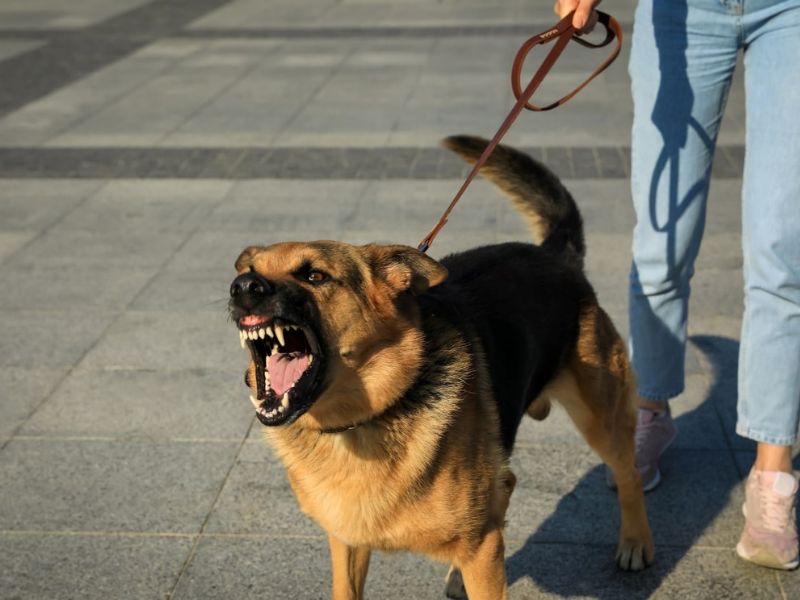
>>>Further reading:
- 6 Techniques For Deaf Dog Training: Easy Step-by-Step For You To Follow
- The Ultimate Guide to Blind Dog Training: 6 Techniques & Tips
Remember, aggressive dog training takes time, patience, and consistency. But with the right tools and professional guidance, you can transform your relationship with your dog. Don’t give up! By implementing the positive training techniques outlined in this article and seeking help from a certified dog trainer or animal behaviorist, you can create a safe and loving environment for your furry friend to thrive. For more information about dog training, don’t forget to check out other posts on Canvas Personalized!




